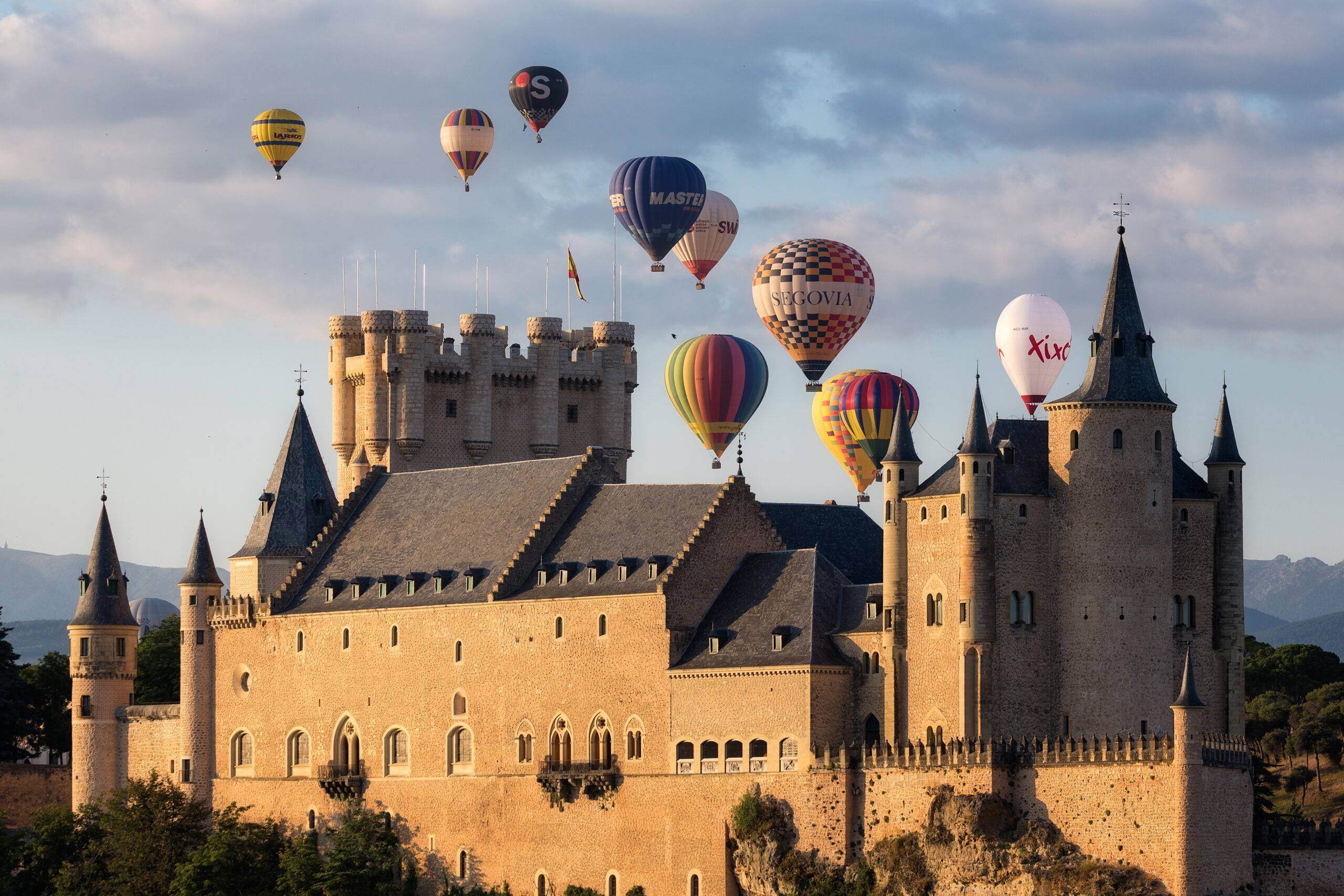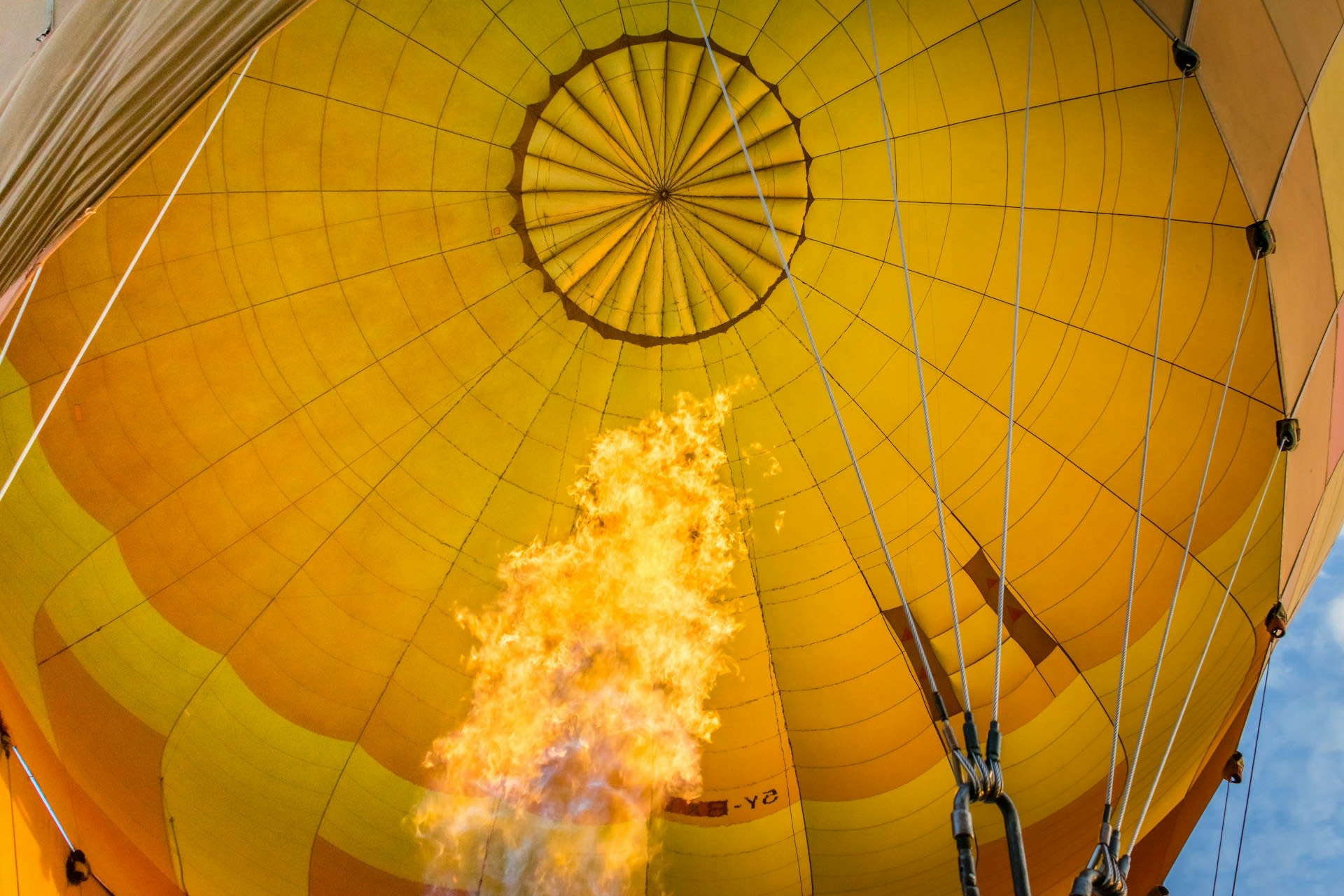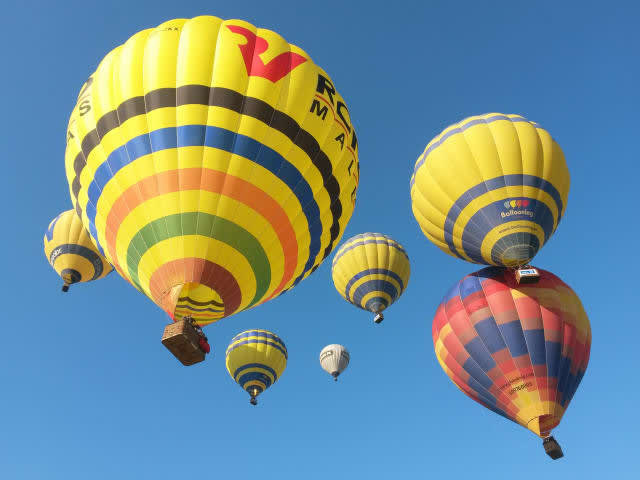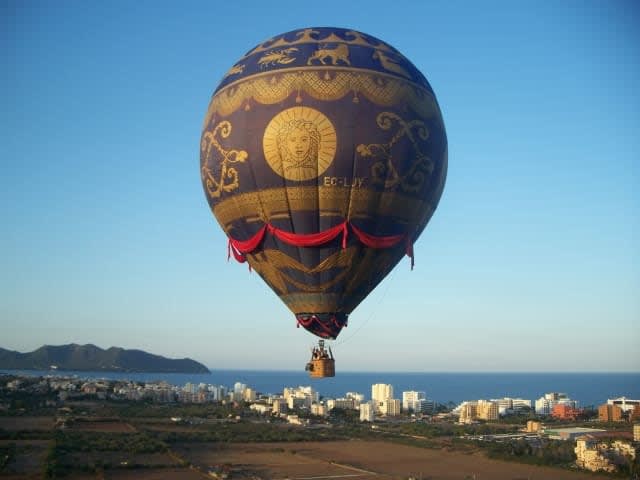The History of Hot Air Balloons

From the first flight, manned by farm animals and witnessed by King Louis XVI and his court, to world records, competitions, tourism, and even space travel, hot air balloons have a long history and a long list of uses until this day. Find out about how they started and how they've been used for the last 240 years!
Hot air ballooning is now an incredible activity available almost everywhere in the world. But how did they start? Why were they created? Did they have an original purpose other than enchanting tourists? Let's find out!
The beginning of this story takes place in Ardèche, France, in the 18th century, where two brothers, Joseph and Étienne Montgolfiere, were born. They were not the first to dream up a machine to make human beings fly, after all, DaVinci and many others had already invented machines and contraptions to allow humans to soar in the air, even if none of them had been very successful; the closest to a hot air balloon were the Chinese sky lanterns, which were invented during the Three Kingdoms Era (220-280 AD) and were used with military purposes.
But Joseph and Étienne experimented and tried putting different materials close enough to the fire to make them inflate, but not close enough to burn. They were finally successful in 1783, when they started gathering attention from scientific circles, including the Académie Royale des Sciences, which brought them to Paris to demonstrate their incredible discovery.
Word got around of the Montgolfiére brother's success, and it even reached King Louis XVI! He asked for a demonstration at Versailles, and they were glad to do it. The first hot air balloon flight took place on September 19, 1783, its envelope (the balloon) was made of a cotton canvas with sheets of paper stuck to both sides, it measured 18.47m tall by 13.28m wide, and weighed 400kg! This first real hot air balloon flight was only manned by a sheep, duck, and cockerel, who climbed onto the wicker basket attached to the envelope and rose 600 meters up into the air, to the amazement of everyone who saw it. The aircraft was called "Le Réveillon", after one of the brother's friends, Jean-Baptiste Réveillon.

Once the safety and overall use of the hot air balloon were proven, because the animals, though shaken, survived, it was time for a human being to ride up into the sky! After some experiences performed by the Montgolfiére brothers, the big event took place about one month after the first flight, and the hot air balloon was manned by Jean Francois Pilâtre de Rozier, who rose up 26 meters into the air and became a pioneer in this aerial wonder.
Hot air balloons did not remain a secret for long. Once the Montgilfiere brothers were successful in their attempt, more scientists and inventors took to their workshops and started working on new and better versions of the aircraft. The 19th century saw an incredible proliferation of the uses of hot air balloons, such as celebrations, scientific investigation, travel, and war, but the original inventors went down in history with the name of the most common type of hot air balloon to this day: the Montgolfiere.
During the 19th century, hot air balloon enthusiasts, which included scientists, writers, kings, and inventors, kept working on improving the aircraft and having it perform bigger and better flights. Close after the first manned hot air balloon flight, Jacques Charles and the Robert Brothers managed to launch a new, hydrogen-fueled balloon in the Jardin des Tuileries. Then, Jean-Pierre Blanchard, incidentally the first person to ever fly a hot air balloon in different countries, managed to cross the English Channel on one of these aircraft!
And in 1852, Henri Giffard flew the first "Dirigible", a hot air balloon powered by a steam engine, that could be steered in the direction the pilot needed. Though Giffard's dirigible was too heavy and his attempt wasn't very successful, others kept working at it and managed to be successful.
Once planes and other flying vehicles were invented, the hot air balloon was relegated to a more whimsical use. However, the 20th century saw a revival of the scientific uses for hot air balloons, and several experiments led them to be used for space travel research!
Still, right now, the most common use of hot air balloons is the tourist one. Hot air balloon activities are available pretty much everywhere in the world, and delight tourists with their scenic flights over some of the most beautiful landscapes. And in this sense, there is an interesting historical fact.
If you ever take a hot air balloon flight, you'll find that it's a tradition to toast the end of it with sparkling wine. This is because the aristocracy of the 18th and 19th centuries embraced hot air ballooning as the new way to entertain themselves and travel over the land so much that it became a "common" pastime, to which they would bring champagne and food. But hot air balloons were big and they needed big fields to land in, which were usually the places where peasants would be farming or simply living their lives. The peasants very much disliked the balloons landing on their fields because the aircraft frightened them and they could damage the land. However, the aristocrats found a way to appease them by always bringing an extra bottle of champagne with them to give the peasants as a sort of payment for their landing rights. The tradition still stands, and now you simply share the celebratory drink with the people who took you on the flight!

Uses along their history
Military
The first time hot air balloons were militarized was during the French Revolutionary War, in the Battle of Fleurus (1794). Hot air balloons provided a high viewpoint in battles and fortresses that only mountains or trees provided until then, and they helped the French to keep an eye on enemy armies.
The trend of using hot air balloons, dirigibles, and other aircraft of the sort, continued through the Franco-Austrian War, the Franco-Prussian War, the American Civil War, and both World Wars. In World War II, for example, "Barrage Balloons" were used to obstruct bombs heading toward London.
World records
Human beings are and have always been a competitive race, and hot air balloons simply presented one more instance in which to create world records and outdo one another. First-world records such as ascending to the sky on a horse, and having the longest, fastest, highest, shortest, lowest, and slowest flights were quickly created and broken. However, people kept trying to create higher and more difficult challenges for themselves, and they haven't stopped!
As recently as 2002, a man called Steve Fosset was the first person to fly around the world in a hot air balloon non-stop, completely alone, and on any kind of aircraft. It took him 13 days, 8 hours, and 33 minutes, and he performed this "round-trip" from Australia.
Scientific development
Already, in December 1783, the Roberts brothers and Jacques Charles took to the skies to measure the atmosphere above the earth with a barometer and thermometer, making it the first flight to successfully provide meteorological measurements.
After that, scientists started going on flights to investigate weather conditions, magnetic field forces, air quality, wind vectors at different altitudes, and in general, meteorological conditions impossible to research from the ground.
Space travel
You read that right. Hot air balloons were some of the most important tools used to experiment and develop space travel. In the 20th century, around the 1930s, Auguste Piccard, a Swiss scientist, started experimenting with the highest altitude a hot air balloon could reach, even creating his own pressurized capsule that would be attached to a high-altitude balloon, which took him up almost 16.000 meters up in the air and made it the first spacecraft to reach the stratosphere without any machinery!
This experiment, and the many that followed, paved the way for the start of space travel in the 1960s. Now, NASA still has a scientific balloon program with which they are paving the way to further and better space travel in the future.
Tourism

As we have said before, right now, hot air balloons are used all around the world to take people up into the air and show them some of the best scenic views of cities or natural landscapes available. Some of the best places to go hot air ballooning include:
However, there are so many different places to go hot air ballooning, not to mention that you can do it in both summer and winter! It's a versatile activity that will enchant you, no matter what.
As you can see, the history of hot air ballooning is a long and interesting one. There's a lot we still probably don't know because it wasn't recorded for posterity, but the truth is that hot air balloons have been a useful and diverse tool for human beings for 241 years already, and they're nowhere close to being obsolete!
Now, you can experience the same thrill those people felt 2 centuries ago by booking a hot air balloon flight in your hometown or wherever you go on vacation! It's an interesting view of how human beings first achieved the incredible feat of flying without wings, and you can not only feel it for yourself, but you can do it while observing beautiful landscapes and with a glass of champagne in your hand.
Read more about the best places to go hot air ballooning, or how hot air balloon flights work nowadays, and book a hot air balloon with Manawa, today!